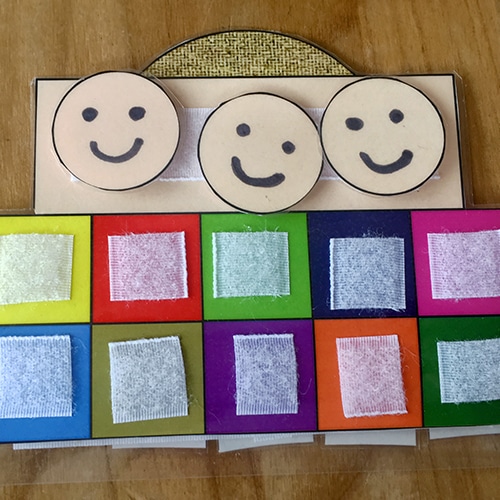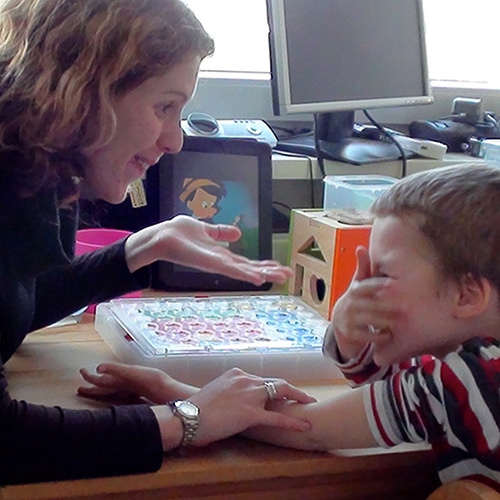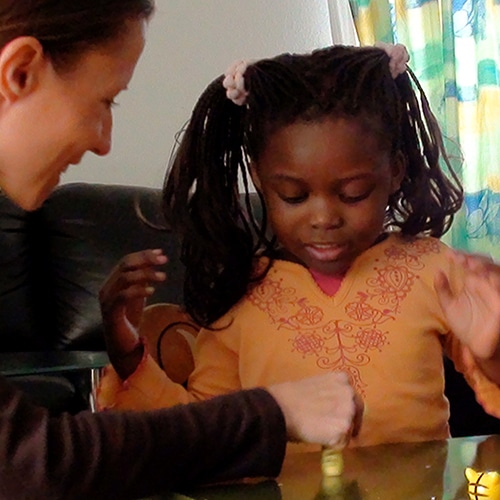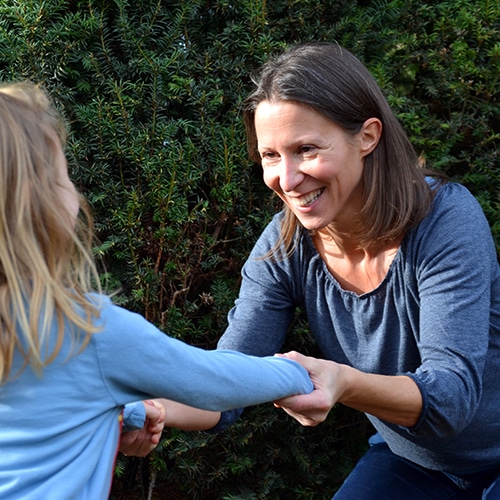Applied behavior analysis, also known as ABA, is the applied branch of a science called behavior analysis. It includes numerous methods to achieve significant and positive behavioral changes. This approach is based on behavioral and motivational principles. VB means verbal behavior.
I have been working very successfully with ABA/VB (applied behavior analysis and verbal behavior) for many years. At the end of the day, this is simply good teaching. ABA/VB was not specifically designed for children with autism. All children can benefit.
Wow – thanks to ABA/VB, I experience enormous spurts of development in families with children with autism!
If the principles of applied behavior analysis are used correctly, the full potential of the child or the adult may be evoked. This is a great support in everyday life and has an impact on social life as a whole.
Scientific studies on ABA, conducted intensively since the early 1960s, prove that ABA has lasting positive effects. Some children have developed behaviors over time that endanger them or others. Such behaviors severely limit their ability to self-determine and participate. The goal is to identify the causes and circumstances for the occurrence of these behaviors and to empower the child to resort to alternative and safe behaviors.
Research in ABA/VB shows that a high percentage of children diagnosed with autism or similar developmental delays can make great progress with intensive instruction. This shows that ABA/VB support can help children close or compensate for developmental gaps and increase communicative skills. In our view, every child can benefit from ABA/VB support and achieve individual goals.

The dream of independent living can become reality

Research in ABA/VB shows that a high percentage of children diagnosed with autism or similar developmental delays can make great progress with intensive teaching. Some children with autism spectrum disorder are able to live a fulfilling life on their own. Without intensive teaching with ABA/VB, children on the autistic spectrum often need cost-intensive services later as adults, such as living in group homes or institutions.
Meanwhile, there are many children who have made progress with ABA/VB where doctors would no longer give the diagnosis of autism spectrum disorder any longer. This shows that the use of ABA/VB’s principles helps children to make up for their deficits, even in the linguistic field.
Ultimately, the children are given the ability and desire to learn and achieve good results. Even if some children do not achieve the “best possible result” with age-appropriate development in all areas, quite all children benefit from intensive ABA/VB programs.
How I work with ABA/VB

My aim is to support individuals dealing with people with autism and similar developmental delays. I show them how to use methods according to trauma-informed and trauma-assumed ABA/VB to support the child to expand his competences and to be able to lead a life as self-determined as possible.
And here is how I proceed:
What does the child need?
- First, I assess the child’s individual needs and abilities.
- Then I analyze how communication can be built and supported.
- The main focus lays on social interaction, mastering everyday situations, promoting self-reliance.
- In concrete terms, this means: to go shopping, cut fingernails, cut hair, build and maintain friendships, express one’s needs and desires.
- To overcome difficulty sleeping and alleviating stress in food situations.
- To master toileting, learning to get dressed.
- To set boundaries appropriately.
- To recognize and deal with one’s own feelings and the feelings of others.
- To strengthen the relationship between parents and children, children and siblings, peers and other caregivers.
- I create an environment where learning success is possible.
I also create individual learning programs, which provide several small learning units.
All beginnings are difficult
- We go through everyday life together and shed light on every situation that is difficult for the family.
- I approach each family individually.
A lot of variety is important
- In building new skills, I use the highest to the lowest assistance with the aim of fading this assistance in the near future. This principle is called “prompting and fading” (error-free learning)
- During my visits at the family’s home, my aim is to support the children to respond quickly. That’s fun and this way they stay engaged
Above all, however, I am interested in helping parents (and all caregivers) to master everyday life with more ease.
The parents know their child best. With ABA, I open a new door for them.
The key to success is motivation
-
My basic assumption is that every child wants to learn, and every child can learn. The reasons why learning is not always successful can be very different. My goal is to find this out together and create optimal conditions for learning.
The prerequisite for learning is motivation. To this end, it is important for me to learn about the child’s unique interests, explore them together, and learn from them.
A positive relationship with my clients is the foundation of my work.
It is important to me to respect and engage with the individual interests of both parent and child.
The most important goal of my consultations is that we create and experience shared attention, the heart connection of parent and child with joy in a safe environment and build new skills and abilities on this basis.
Strengthen connections
- In my teaching, I motivate children with favorite activities and items.
- An important part of my work is the so-called “pairing”. A person or action is associated with favorite items and activities, combined with positive feedback, so that we are experiencing joint attention and happiness, and are enjoying our time and laughing together.
- This allows the child’s interest to be built up.
- It strengthens the connection in relationships with other people.
The children I work with get a lot of positive feedback from me and we have fun learning. At the same time, I collect data so that I can ensure that my learning programs show progress and lead to desired outcome.
Taking all these points into account is the basis for good learning with ABA/VB.



ABA/VB Info DVD
Videos about autism and teaching with ABA / VB .
